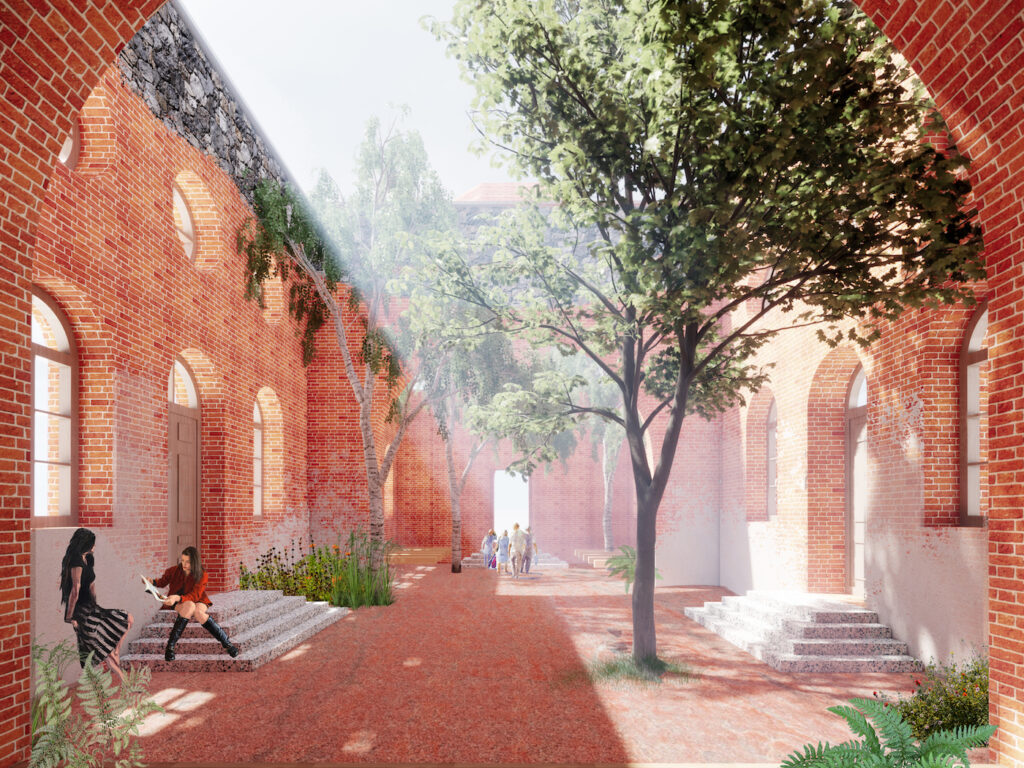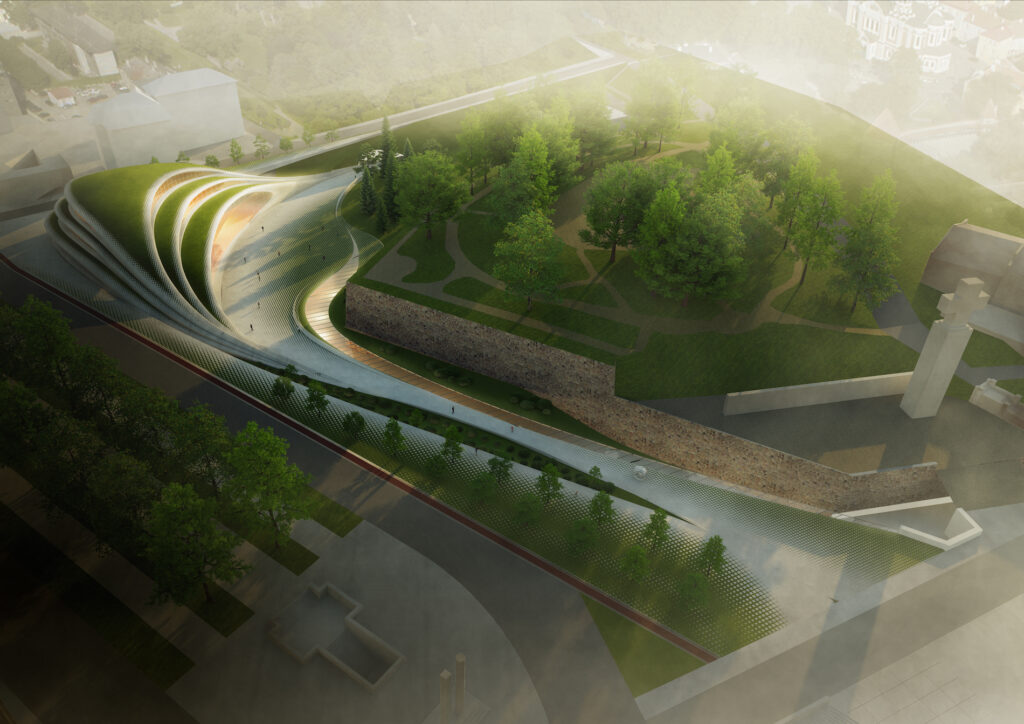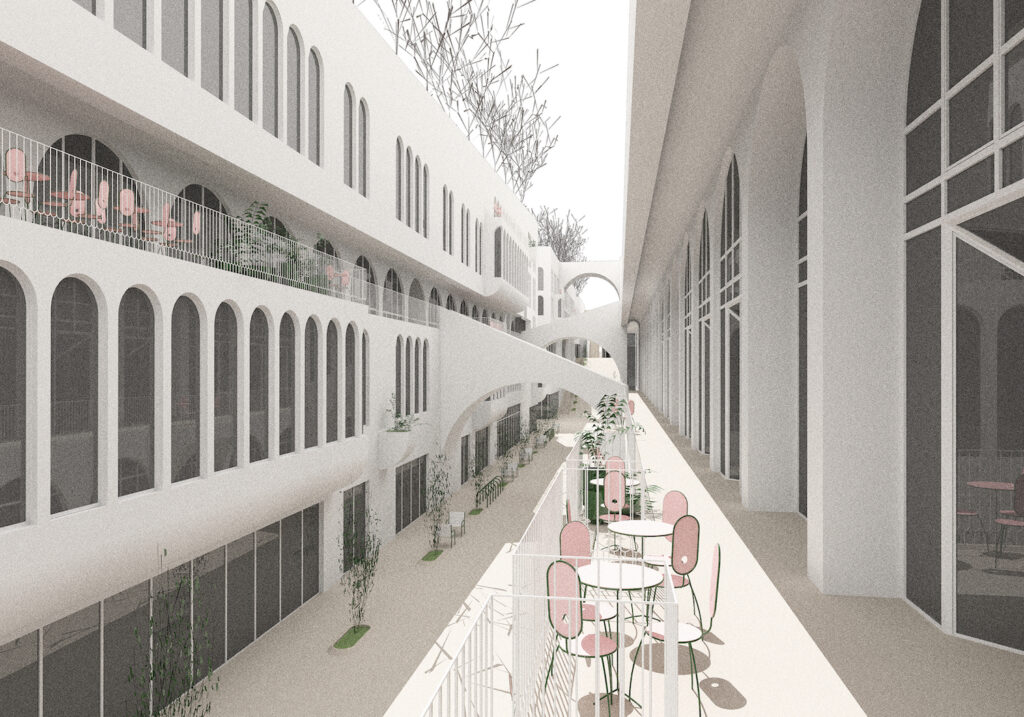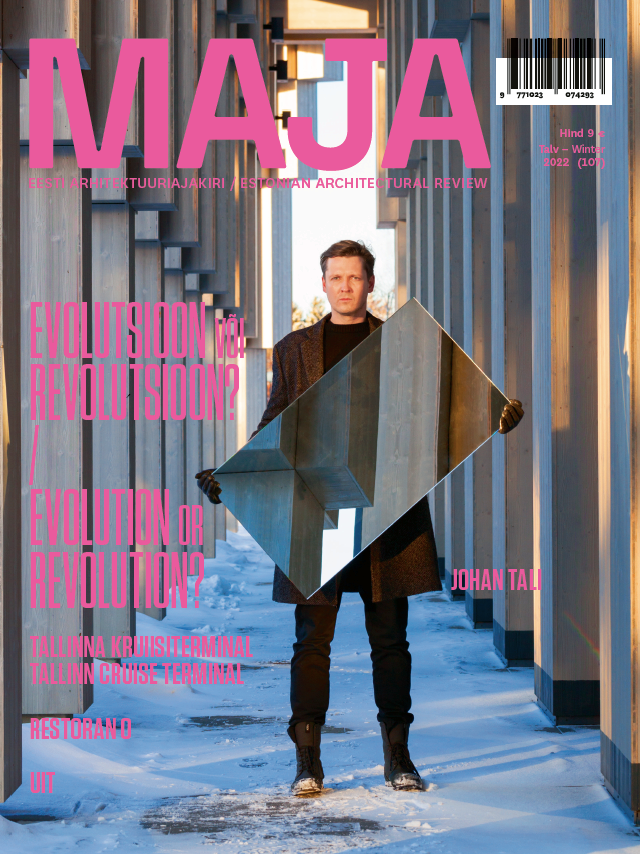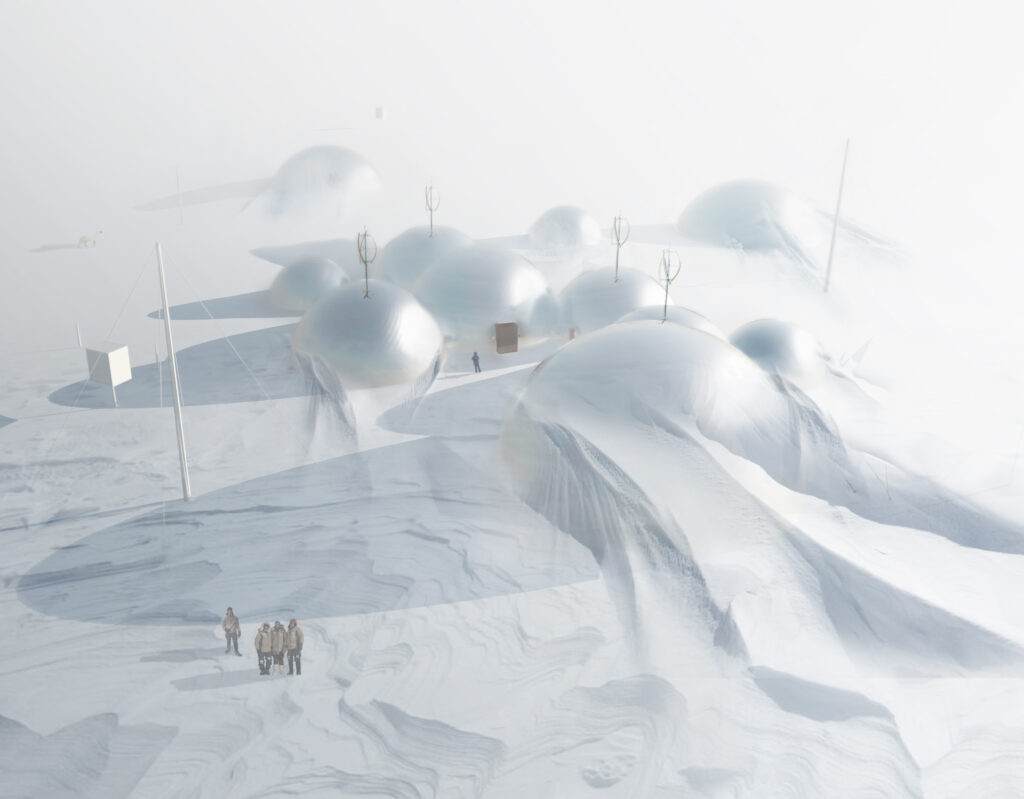Lihula is a small town where every new business can potentially shift the focal point. The competition ‘Great Public Spaces’ dedicated to the 100th anniversary of the Republic of Estonia focused on the historical axis and main street of the town–Tallinn Road. Our competition entry ‘Hõbelauk’ aimed at diversifying the street space and highlighting the mysterious local spatial potentials. We wished to allow every new potential to rise and shine thus enhancing the appearance and also natural disappearance of various places.
The bastion belt should be a park with its use activated by a building.
‘Heliorg’ explores the possibilities for reviving the bastion belt surrounding Tallinn Old Town.
The work marks a reaction to a personal and scary experience with the highrises in central Los Angeles. When I was living and studying in LA in 2010, I imagined a dystopian degenerating city characterised by overwhelming monofunctionality pushing out the weak, increasingly higher and denser office buildings and the street space sinking into darkness.
The hybrid building merges the library and botanical garden into a spatial whole, a symbiosis of design and high technology. It is located in Burggarten in Vienna – the historical imperial private garden of the Habsburg family, between the Austrian National Library and Palmenhaus.
The aim of the work is to achieve harmony and universal beauty. I value milieus and particular atmospheres carrying it. Sometimes I convey it with a single line or a geometric detail that can evolve into a deeper spatial gesture.
‘We had completed our design submission for an architectural design competition. The detailed plan determined the building’s shape, roof pitch, roof height, eave height, the choice of building materials, entrance to the lot, the parking space of its residents and the client also provided us with a specific layout for rooms. We thought we had quite a decent building. Then an architecture student appeared and asked: ‘Well, what is the concept of this building...?’’
Architect Madli Kaljuste takes a look at Linnahall that hides traces of 400-million-years-old life in its walls.
The current work explores the role of the architect in the face of changing environmental conditions. The Arctic area is confronted with dramatic social, economic and environmental changes. The increasing pressure on the Arctic natural resources and Arctic Ocean waterways sets higher demands for the otherwise sparsely populated area. In order to ensure more efficient search and rescue competence and nature protection, a new infrastructure is needed.
No more posts
ARCHITECTURE AWARDS


